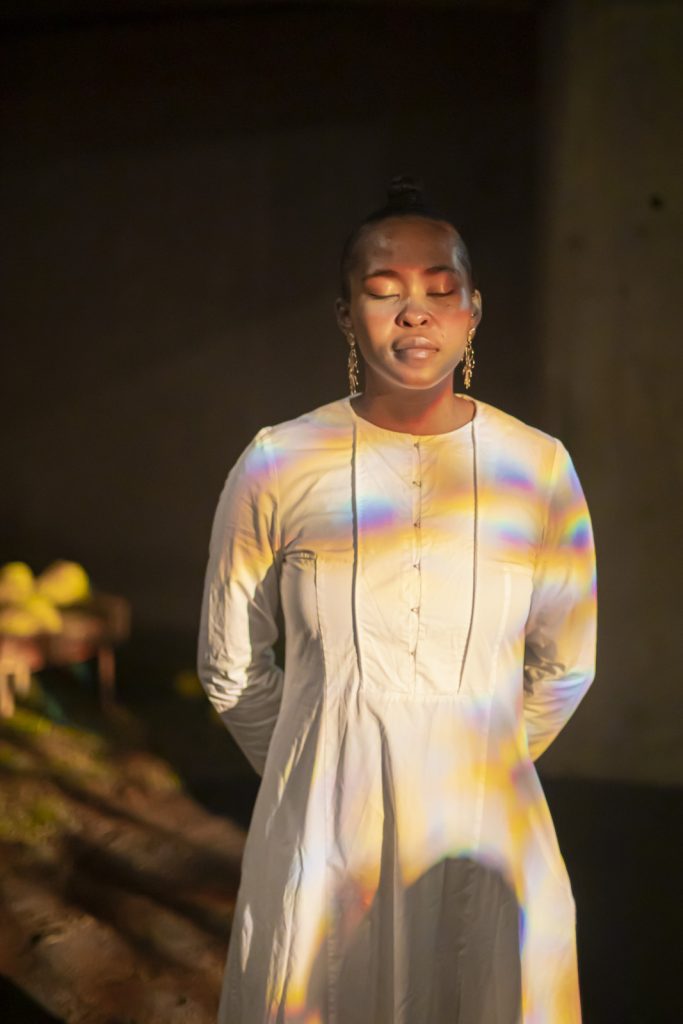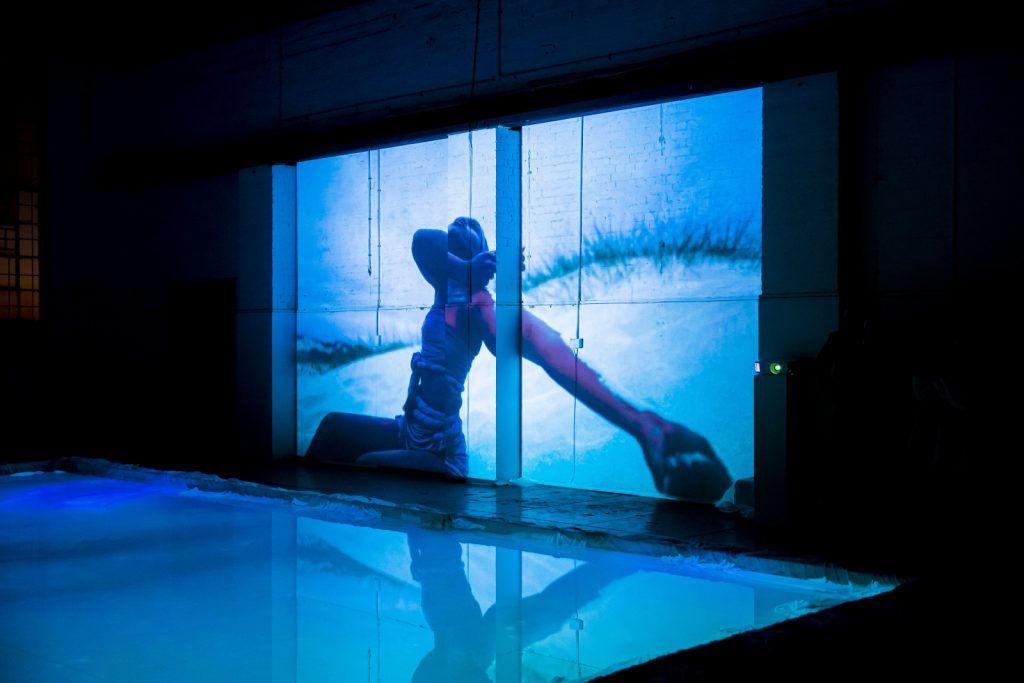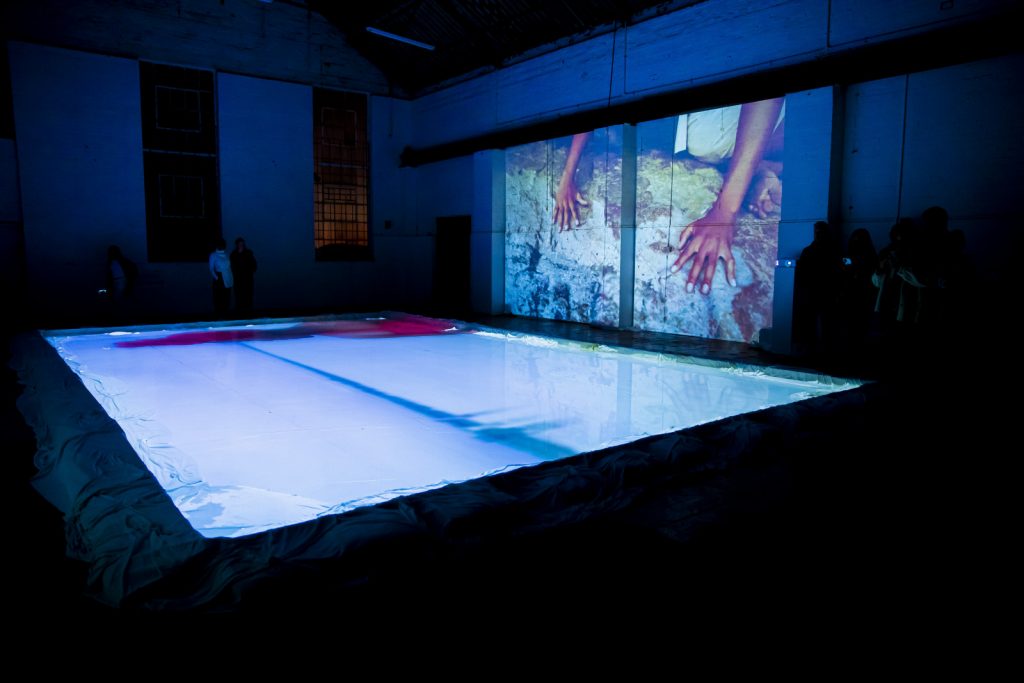Tangible elements: 'Ilangalibalele' uses steel, wood, imphepho. Photo: Supplied
In 2017, whilst studying for my Honours in English Literature, my fellow classmates, lecturers and I went on an excursion. As part of the trip, we took a guided trail into the Karoo where we explored the natural semi-desert terrain and appreciated the unassuming presence of medicinal plants and San rock art. As our guide spoke on the significance of the animals portrayed in the rock art and pointed out plants to explain their medicinal uses, I felt a sudden pang of emotion when taking in the view of the rocky-red terrain stretched out before me.
Even in the Karoo’s seemingly desolate appearance, with its unbreaking endless pattern of scattered rocks, stones, miniature, hardy shrubs and its ochre-coloured soil, there was a clarity in the breadth of its expansiveness that somehow justified the many possibilities of the rich pasts and lives of animals and people who inhabited the area previously. In our aesthetic appreciation of nature lies the inexplicable, divine ability to connect with what you see before you even through imagination, to feel a sensation of fluttering or a rising in the chest or stomach that almost shakes your core as you surrender to the awe and wonder you might feel as you dwell and meditate on subjects of nature’s beauty.
This is the kind of immersive, meditative experience offered by the Standard Bank Young Artist for Visual Art (2021), Buhlebezwe Siwani in her latest exhibition at the Standard Bank Art Gallery in downtown Johannesburg. Her exhibition, titled Iyeza (a Xhosa word which translates to ‘plant-derived medicine’ or a substance that invites good energy while warding off the bad) draws upon Siwani’s life and her vocation as an initiated traditional healer. In its project to interrogate the use of plants in traditional medicine, their evolution in society and the way they’ve been perceived through time, Iyeza also seeks to recognise the powers that lie in understanding the interconnectedness of the earth, the body and the spiritual.
 Buhlebezwe Siwani is the Standard Bank Young Artist for Visual Art (2021) Photo: Trevor Kolk
Buhlebezwe Siwani is the Standard Bank Young Artist for Visual Art (2021) Photo: Trevor Kolk Siwani’s desire to interrogate amayeza and highlight the connectedness of the spiritual and the physical stems from a recognition of the cognitive dissonance at play in individuals who seemingly hold unjustified biases against the value of traditional African healing and medicine.
“I had been thinking about the negative attitude that people have had about amayeza and how traditional medicine is vilified,” says Siwani. “People fear it even though they don’t carry the same concerns over something like Panados for example, which are also essentially amayeza. Many people aren’t even familiar with the properties of a Panado. If you go to a traditional healer, the healer will tell you this plant is made for this and that this is what it has or this is what it does. You know exactly what you’re getting, and yet people project so many negative thoughts and ideas about iyeza. That’s very fascinating to me,” says Siwani.
The inclination to question the effectiveness or value of traditional knowledge in medicine oftentimes has its origins in an internalised Western ideological way of thinking that’s rooted in racism rather than any deep investment in probing its efficacy.
 Fluid and reflections: The film installation ‘Yehla Moya’ (meaning ‘spirit enter’) is centered on women who strive for healing and knowledge on medical plants. Photo: Trevor Kolk
Fluid and reflections: The film installation ‘Yehla Moya’ (meaning ‘spirit enter’) is centered on women who strive for healing and knowledge on medical plants. Photo: Trevor KolkColonialism’s suppression of indigenous knowledge came from Christianic missions of civilising that required black African communities to forego traditional beliefs and practices while servicing settler communities who required their labour. This rejection of traditional beliefs and practices by white missionaries was largely underpinned by the prioritisation of intellectualism and rationalism in European thought, as well as biblical texts which misinterpreted paganism and witchcraft for traditional indigenous knowledge in African communities where, as UKZN Honorary Senior Lecturer Dale Wallace indicates in her paper on constructions of witchcraft in South Africa, concepts of umthakathi (witchcraft) were already recognised as separate from traditional healing and medicine.
It is with this understanding of the centuries-long distortion of African religious and spiritual belief systems that we can fully admire and respect the necessity of projects like Iyeza, especially during a time when many young black people are experiencing a revived interest in traditional belief systems even as they face criticism and resistance in some respects.
Siwani’s art installations at the Standard Bank Art Gallery, an establishment which has consistently prioritised South African art forms and cultural development, include the piece, Ilangalibalele, which can translate to “the sun is shining or the sun-up in the sky”. It is a representation of four celestial bodies depicted with the use of wooden poles bound up and created with imphepho and imbola, a plant and substance which are important sources of both physical and spiritual healing among a variety of ethnic groups in South Africa and the continent as a whole. The bodies are arranged across a dimly lit room that casts shadows of their shapes across the walls and the locally-sourced soil that covers the room below.
In this piece, it is crucial to note the specific use of cultural objects such as imphepho, imbola and wood in the creation of celestial bodies which, in turn, represent ancestors and spirit beings in many traditional African spiritual belief systems. In the piece’s attempt to demonstrate the interdependent relationship between the earth through the soil, the body through culturally-significant artefacts and the spirit world through the constellation of bodies, Ilangalibalele solidifies Siwani’s intentions to convey how “our bodies and spirits are tied to the earth and waters on and in which we are born and raised.”
 Fluid and refelctions: The film installation ‘Yehla Moya’ (meaning ‘spirit enter’) is centered on women who strive for healing and knowledge on medical plants. Photo: Trevor Kolk
Fluid and refelctions: The film installation ‘Yehla Moya’ (meaning ‘spirit enter’) is centered on women who strive for healing and knowledge on medical plants. Photo: Trevor KolkStandard Bank Gallery manager, artist and curator, Dr Same Mdluli, says that Iyeza, like much of Siwani’s other works, is a way of “embracing her gift”. In turn, Siwani’s ability to embrace this gift through art also has the potential to offer spaces of solace for individuals or communities who seek to be represented in cultural spaces.
“Iyeza is kind of an activism for indigenous knowledge,” says Dr Mdluli. “It’s about offering people insight into how this [traditional African healing] can be a way in which you can deal with the challenges you might be having in life, even if it’s a challenge you’re experiencing in having a calling or if you know of a relative experiencing a calling. I would hope that something like this, that’s visual, can offer a different perspective, especially considering that [traditional African healing] is really just a different form of counselling or therapy. Having art like Buhle’s can help as a catalyst to have conversations about healing.”
In her use of the theme of healing, Siwani centres the black female body, since, as she states, she can “only speak from [her] own experience” of inhabiting a black and female body. “I’m also quite tired of hearing about the black female experience from other people who are not black and female. There’s never really a focus or a sense of respect when speaking about black women’s experiences compared to black men’s experiences or white women’s experiences for instance, and so I think it’s really important that we speak about our lived experiences as black women.”
In Yehla Moya (which means “spirit enter”) a film installation is projected across a body of water using special projectors that provide remarkable clarity over the water’s gentle waves. The film, which was shot in several natural landscapes in Cape Town, including the seaside spots of St James Beach and Monwabisi Beach, centres its narrative on women who strive for healing and labour as they source out the medicinal plants of their environment.
 Tangible elements: ‘Ilangalibalele’ uses steel, wood, imphepho. Photo: Supplied
Tangible elements: ‘Ilangalibalele’ uses steel, wood, imphepho. Photo: SuppliedIn this film, Siwani has also highlighted women’s journeys of healing and survival in spite of the impact of ecological warfare which, in exploiting and violating their environment, potentially threatens their spiritual and physical well-being. Still, they embody fluidity, collaboration and survival through the impassioned dance and movements they perform throughout the film.
This portrayal of survival can be witnessed in the many real-life endeavours undertaken by community-based activists across the country to fight the detrimental effects of mining activity in their communities. Examples of such communities engaging in years-long activism to protect their environment include members of Masodi village in Limpopo who have fought to protect burial and heritage sites from the schemes of a big platinum mine operation as well as the activists of Xolobeni, Eastern Cape. They won a case in Pretoria high court in 2020 that granted them rights to accessing the information of mining operations that could affect their community.
Siwani’s insistence on making use of the black female body in her artwork also acts as a resistance to Western capitalist and racist systems. In some ways, it is not too dissimilar to the ways other artists like Mary Sibande or Sethembile Msezane have used the body in art as a tool to express a desire for the recognition of black women in the social and political spheres of South Africa, where colonial and patriarchal systems of logic have played a central role in denying black women their experiences and subjectivity.
Even so, representations of the black female body in Siwani’s work are not limited to its visibility, per se, as seen in the installations of Ilangalibalele and a third installation titled Inkwenkwezi (meaning stars) that uses eucalyptus tree stumps, grass and soil, as Siwani offers a rumination on healing using belts from traditional uniforms of the South African Zion and Apostle churches. In my own feelings of awe and transcendence, while dwelling on the beauty of the Karoo terrain, there is an indication of recognising myself outside of my own body in the process of connecting to nature and the world around me.
“I think Buhle’s works are an extension of the multiplicity that we always speak about, of moving away from wanting to frame, box or stereotype the black female body. How Buhle does this is represented in other ways that are in the elements of the fluidity of water, its gentleness and stillness. I would imagine that when there’s activity in the gallery, the water experiences movement and at night when no one’s here, I can imagine the still aura it has,” says Dr Mdluli.
“It’s the same with the earth, the soil and the grass. The exhibition opens on 23 February and will be on until 8 April. You can imagine what the grass will be like by then. There’s a process of growth happening even there. For me, those are things that are able to represent the black female body without having to overtly present it,” concludes Dr Mdluli.
Iyeza by Buhlebezwe Siwani is currently on at the Standard Bank Art Gallery from 23 February to 8 April.